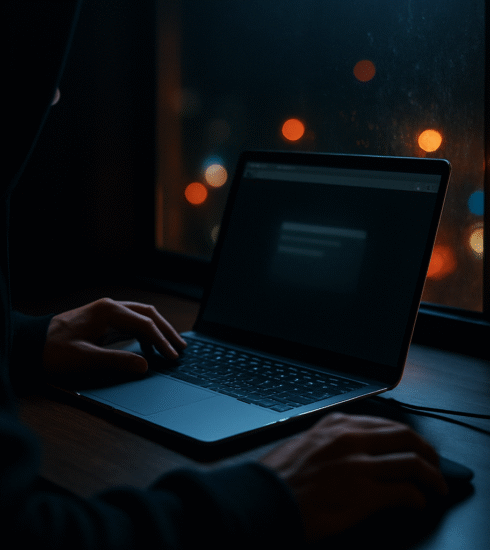Burner Laptops Versus Burner Phones – Which To Use When
Operational security often requires compartmentalized tools for specific tasks. The choice between a dedicated laptop or a dedicated phone is not about which is better overall but about which is right for the specific mission parameters. Each device has distinct strengths and weaknesses in terms of connectivity, physical presence, and operational lifespan. Understanding these differences is critical for maintaining a low profile and protecting your data. This discussion will focus on the practical, lawful applications of these tools for security professionals and prepared civilians. We will explore the core principles of when to deploy each asset. The central question of burner laptops versus burner phones hinges entirely on the nature of the task and the required layer of anonymity.
The primary threat is correlation. A single mistake links your anonymous identity to your real one. The rule is strict compartmentalization. Never cross the streams between your clean and operational equipment.
Defining the Operational Device
An operational device is a dedicated piece of hardware used for a specific purpose or timeframe. It is not necessarily illegal or intended for nefarious purposes. Journalists use them to protect sources, executives use them for sensitive negotiations, and security teams use them for discrete travel planning. The core principle is isolation from your primary digital identity. This device should have no stored credentials, personal data, or automatic connections to your other life. Its purpose is to create a firewall between an activity and your personal or professional mainframe.
People often misunderstand the term burner, associating it exclusively with criminal activity. In a professional security context, it simply means a device with a finite and controlled lifespan. Its value lies in its disposability, not necessarily its cheap cost. You acquire it with anonymous means, use it for a defined objective, and then dispose of it thoroughly and permanently. The goal is to leave no persistent digital fingerprint that can be traced back to you after the operation concludes. This practice is about risk mitigation and operational hygiene.
The Cellular Advantage of a Dedicated Phone
A dedicated phone excels through its inherent mobility and immediate connectivity. Its primary strength is facilitating voice and text communication from almost any location. For a close protection team coordinating a movement, instant and reliable communication is non negotiable. A simple text message can convey a status update or an alert faster and more discreetly than any other method. The device itself is small, easily concealed, and can be powered on for short bursts of activity.
Modern smartphones, even inexpensive prepaid models, also offer encrypted messaging applications. These apps provide a higher level of security for text based communication than standard SMS. This capability is useful for sending sensitive information that must be protected in transit. The phone can also serve as a mobile hotspot, providing internet access for a laptop without tying that laptop to a fixed location like a hotel Wi-Fi network. This adds a valuable layer of abstraction for the laptop’s online activity.
Assume every public Wi-Fi network is actively monitored. Never access anything personal or sensitive from any device on a public network. Use a cellular connection from your operational device as a mobile hotspot for a more secure link.
The Processing Power of a Dedicated Laptop
A laptop’s main advantage is its interface and processing capability. It is the correct tool for any task requiring significant research, analysis, or content creation. Sifting through large amounts of data, compiling reports, or managing complex logistics is impractical on a small phone screen. The physical keyboard and larger display allow for efficient work that would be frustratingly slow on a mobile device. This makes it indispensable for planning phases or intelligence preparation.
Software based encryption is also more robust and manageable on a laptop platform. You can employ full disk encryption to protect the device if it is lost or stolen. Virtual private networks can be configured and managed more thoroughly on an operating system like Linux or Windows. For tasks requiring deep web research or access to specific databases, the laptop provides the necessary firepower and screen real estate. It is a command and control node, whereas the phone is a communication tool.
Another critical function is media verification. Examining photographs, videos, or documents for authenticity or metadata is a task for a computer. Specialized software can analyze files for tampering or extract hidden information. This level of detailed scrutiny is simply not possible on a standard mobile phone. The laptop serves as a forensic workstation for validating information before it is acted upon.
Physical Security and Concealment Factors
The physical profile of each device presents different challenges. A phone is small and can be carried on your person without drawing attention. It can be powered off completely and concealed in a variety of ways. This makes it ideal for dynamic situations where you are moving through different environments. Its small size also makes it easier to dispose of quickly and completely if the situation demands it.
A laptop is a larger signature item. Carrying a computer bag or backpack announces that you have a valuable electronic device. It is more difficult to conceal and cannot be easily discarded in a moment of urgency. Securing a laptop in a vehicle or hotel room requires additional measures like a cable lock or a safe. Its physical presence must be factored into every movement and lodging decision during an operation.
If compromised, a laptop also holds far more potential forensic data than a phone. Even with diligent cleaning, remnants of files, browser history, or system logs can potentially be recovered. A factory reset on a phone is generally more effective at wiping all user data due to the simpler nature of the operating system. The physical hardware of a laptop is a greater liability if it falls into the wrong hands.
The Digital Footprint and Anonymity Curve
Every device connected to a network leaves a trace. The goal is to minimize and control that trace. A phone’s primary identifier is its International Mobile Equipment Identity number and SIM card. Prepaid SIMs purchased with cash provide a degree of anonymity for cellular networks. This anonymity is relative and can be compromised by cell tower triangulation and other law enforcement techniques.
A laptop has a Media Access Control address for its network interface. When it connects to Wi-Fi, that MAC address can be logged. Using a laptop on any network ties its hardware signature to the activity performed at that time and location. Sophisticated users can spoof these addresses, but that requires skill and introduces another potential point of failure. The laptop’s larger digital footprint requires more active management to maintain operational security.
Web browsers on both devices are prolific data leakers. They automatically request information that can fingerprint the device, such as screen resolution, installed fonts, and browser plugins. This information can be used to link activity across different sessions, even if other identifiers are changed. Hardening a browser requires disabling many convenient features, which is more easily accomplished on a laptop than on a mobile phone. The anonymity curve is steeper for a computer, requiring more technical effort to achieve a similar level of obscurity.
Acquisition and Disposal Protocols
How you obtain the device is as important as how you use it. Both phones and laptops should be purchased with cash from a large retail store with high customer volume. Avoid security cameras during the transaction if possible, though this is increasingly difficult. Do not provide any personal information or use a loyalty card. The goal is to create no financial record linking you to the device.
The device should never be taken to your home, office, or any location associated with you. It should never be powered on near your primary residence. Before first use, conduct any necessary updates from a neutral public location far from your usual haunts. This initial setup is a vulnerable period where the device can establish connections that may later be used for correlation.
Disposal must be absolute and irreversible. For a phone, remove the battery and SIM card. Destroy the SIM card completely. Physically destroy the phone itself, ensuring the memory chips and internal storage are smashed beyond recovery. Do not simply throw it in a dumpster. For a laptop, remove the hard drive or solid state drive. Physically destroy this storage medium with extreme prejudice. The remaining shell of the laptop has no intelligence value once its brain is destroyed.
Matching the Tool to the Operational Task
The decision matrix is straightforward. If the mission requires voice communication, movement, and quick status updates, the phone is your tool. It is for talking, texting, and receiving small data packets like images or documents. A protection detail on the move lives on their phones. The laptop remains secured elsewhere until the team is static and requires its greater capabilities.
If the mission involves deep research, report writing, data analysis, or managing complex digital files, the laptop is essential. It is for thinking, planning, and processing information. An analyst supporting a remote team will operate primarily from a laptop, using a phone only for urgent communication. The phone supports the laptop’s work by providing a secure mobile internet connection.
For maximum security, a hybrid approach is often best. Use a dedicated phone for communication. Use a dedicated laptop for data work. Crucially, never use the same device for both functions if absolute compartmentalization is required. This two device model ensures that a compromise of one system does not necessarily lead to a compromise of the other. It creates a valuable operational buffer.
The choice between burner laptops versus burner phones is therefore a tactical one. It is about applying the right tool for the right job within a framework of strict operational security. There is no single correct answer for every scenario. The professional assesses the requirements of the task, the threat environment, and the consequences of compromise. They then select the device that provides the necessary capabilities with an acceptable level of risk.
Always begin with the end in mind. Define what a successful and secure outcome looks like, then work backward to select the tools that will get you there without exposing you to unnecessary danger. Your equipment is a means to an end, not the end itself. Choose wisely, use deliberately, and dispose of thoroughly.





